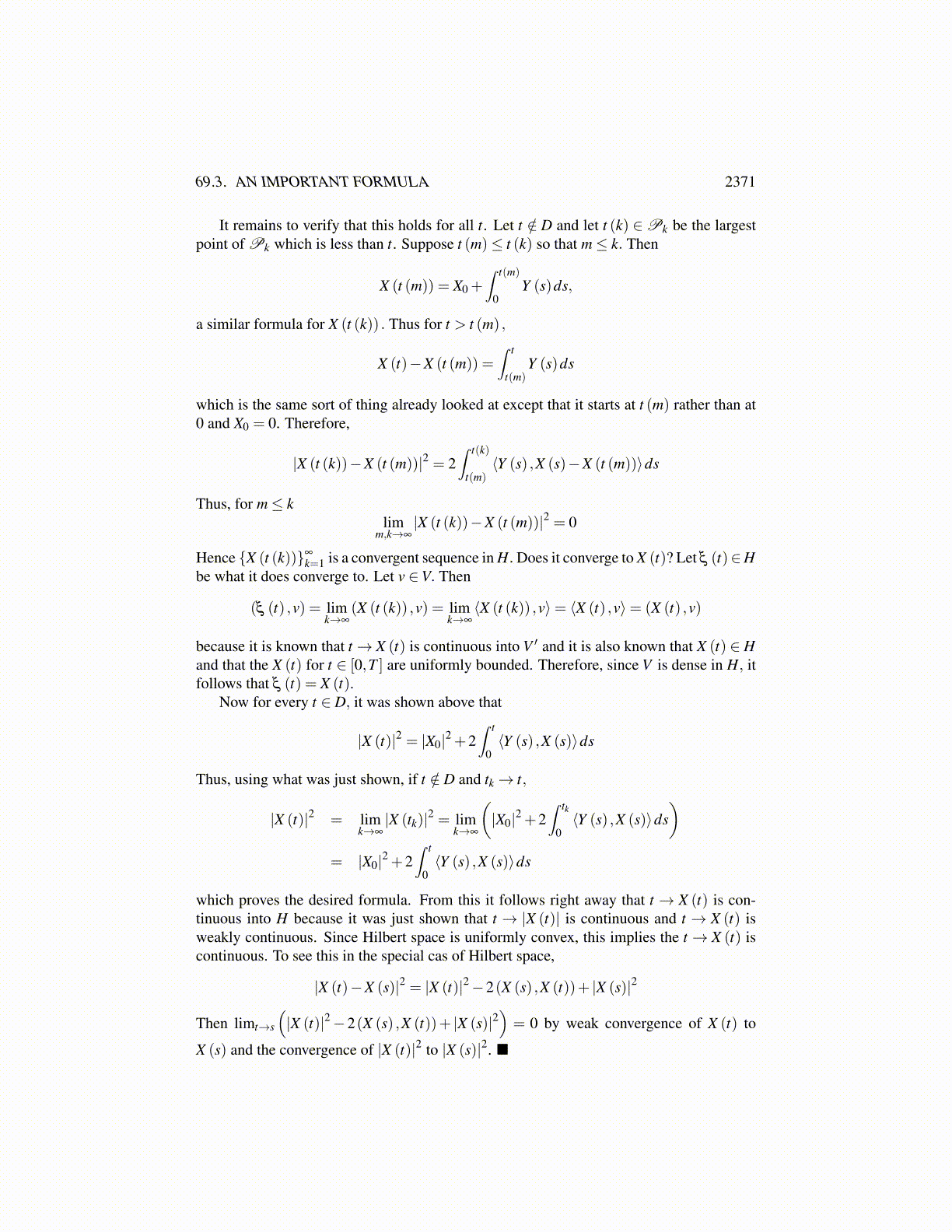
69.3. AN IMPORTANT FORMULA 2371
≤ |X0|2 +2(∫ T
0∥Y (u)∥p′
V ′ du)1/p′(∫ T
0∥X r
k (u)∥pV du
)1/p
≤C (∥Y∥K′ ,∥X∥K)
because these partitions are chosen such that
limk→∞
(∫ T
0∥X r
k (u)∥pV
)1/p
=
(∫ T
0∥X (u)∥p
V
)1/p
and so these are bounded. This has shown that for the dense subset of [0,T ] , D≡ ∪kPk,
supt∈D|X (t)|<C (∥Y∥K′ ,∥X∥K)
Now let {gk}∞
k=1 be linearly independent vectors of V whose span is dense in V . This ispossible because V is separable. Then let
{e j}∞
j=1 be an orthonormal basis for H such thatek ∈ span(g1, . . . ,gk) and each gk ∈ span(e1, . . . ,ek) . This is done with the Gram Schmidtprocess. Then it follows that span({ek}∞
k=1) is dense in V . I claim
|y|2H =∞
∑j=1
∣∣⟨y,e j⟩∣∣2 .
This is certainly true if y ∈ H because⟨y,e j
⟩= (y,e j)H
If y /∈ H, then the series must diverge since otherwise, you could consider the infinite sum
∞
∑j=1
⟨y,e j
⟩e j ∈ H
because ∣∣∣∣∣ q
∑j=p
⟨y,e j
⟩e j
∣∣∣∣∣2
=q
∑j=p
∣∣⟨y,e j⟩∣∣2→ 0 as p,q→ ∞.
Letting z = ∑∞j=1⟨y,e j
⟩e j, it follows that
⟨y,e j
⟩is the jth Fourier coefficient of z and that
⟨z− y,v⟩= 0
for all v ∈ span({ek}∞
k=1) which is dense in V. Therefore, z = y in V ′ and so y ∈ H.It follows
|X (t)|2 = supn
n
∑j=1
∣∣⟨X (t) ,e j⟩∣∣2
which is just the sup of continuous functions of t. Therefore, t→ |X (t)|2 is lower semicon-tinuous. It follows that for any t, letting t j→ t for t j ∈ D,
|X (t)|2 ≤ lim infj→∞
∣∣X (t j)∣∣2 ≤C (∥Y∥K′ ,∥X∥K)